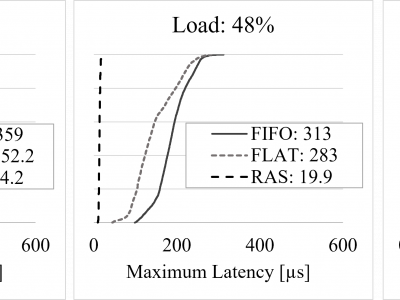Cloud Computing

This dataset plays a pivotal role in facilitating efficient resource management strategies, catering to the complex needs of modern Fog/Cloud environments. It comprises comprehensive information regarding machine configurations, task requirements, and bandwidth allotments. These details are indispensable for optimizing resource utilization, ensuring tasks are assigned to suitable machines based on their capabilities, and managing bandwidth allocation to prevent bottlenecks and maximize network efficiency.
- Categories:
 42 Views
42 ViewsThis dataset results from a 47-day Cloud Telescope Internet Background Radiation collection experiment conducted during the months of August and September 2023.
A total amount of 260 EC2 instances (sensors) were deployed across all the 26 commercially available AWS regions at the time, 10 sensors per region.
- Categories:
 227 Views
227 ViewsThis dataset results from a month-long cloud-based Internet Background Radiation observation conducted in May 2023.
A sensor fleet comprised of 26 EC2 compute instances was deployed within Amazon Web Services across their 26 commercially available regions, 1 sensor per region.
The dataset contains 21,856,713 incoming packets, out of which 17,008,753 are TCP datagrams, 3,076,855 are ICMP packets and the remainder, 1,770,418 are UDP messages.
- Categories:
 218 Views
218 Views
We utilized Digital Ocean's cloud service, setting up three Linux virtual machines, each with 1vCPU, 1GB of memory, and a 10GB disk. The architecture included an API gateway for routing requests to a stateless application service backed by a database for storing application data. The application operates the service under a fluctuating workload generated by a load-testing script to simulate real-world usage scenarios. The target source or the application service is integrated with Prometheus, a monitoring tool for gathering system metrics.
- Categories:
 182 Views
182 ViewsThe data set was used to produce three figures (Figs. 4, 5, and 6) in the experimental section of a manuscript submitted for review to the IEEE Communications Magazine. The submission, titled Lightweight Determinism in Large-Scale Networks, describes a novel approach to the realization of network determinism in packet-switched networks of generic size and topology.
- Categories:
 333 Views
333 Views
The advent of the Internet of Things has increased the interest in automating mission-critical processes from domains such as smart cities. These applications' stringent Quality of Service (QoS) requirements motivate their deployment through the Cloud-IoT Continuum, which requires solving the NP-hard problem of placing the application's services onto the infrastructure's devices. Moreover, as the infrastructure and application change over time, the placement needs to continuously adapt to these changes to maintain an acceptable QoS.
- Categories:
 138 Views
138 ViewsThe Transport-level pAcket RouTing ANalysis Tool for Cloud-native Applications (TARTAN) Dataset contains TARTAN/HiPerConTracer Traceroute runs between an endpoint in Oslo, Norway and the public Comprehensive TeX Archive Network (CTAN, https://www.ctan.org) and Comprehensive R Archive Network (CRAN, https://cran.r-project.org) mirror we
- Categories:
 273 Views
273 Views
When designing task scheduling algorithms in mobile edge computing (MEC), the mobile device (MD)'s mobility becomes an important concern, since the change in MD's location would affect the data transmission rate, leading to fluctuations in task transmission duration and completion time. In this paper, we study a mobility-aware task off-and-downloading scheduling problem in MEC, considering both the communication delay and energy consumption caused by the data offloading and the result downloading.
- Categories:
 352 Views
352 Views
This quantitative correlational research study aimed to investigate the factors affecting the implementation of zero-trust security and multifactor authentication (MFA) in a fog computing environment. Fog computing is an emerging decentralized technology that extends cloud computing capabilities near the user. A fog computing environment helps in faster communication with the internet of things (IoT) devices and reduces data transmission overheads.
- Categories:
 331 Views
331 Views



